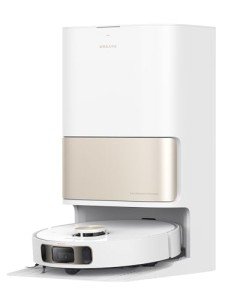The Rise of Robot Sweepers: Revolutionizing Household Cleaning
In the hectic world of innovation, robotic home appliances have actually emerged as important buddies in the mission for a cleaner home. Among these technological marvels, robot sweepers have gained considerable popularity due to their capability to perform cleaning jobs effectively while minimizing human effort. This post checks out the intricacies of robot sweepers, their advantages, operating systems, and their future in household cleaning.
What Are Robot Sweepers?
Robot sweepers, frequently referred to as robotic vacuum cleaners, are autonomous gadgets designed to clean floors with minimal human intervention. Equipped with numerous sensing units, brushes, and suction abilities, these smart gadgets browse through living spaces, getting dust, dirt, and particles effectively. They come in numerous sizes and shapes, accommodating different cleaning requirements and floor types.
Secret Features of Robot Sweepers
Smart Navigation Systems:
- Many robot sweepers use innovative navigation systems such as LIDAR or camera-based mapping to develop an in-depth map of the location they clean up. These systems help them navigate efficiently and avoid barriers.
Scheduled Cleaning:
- Users can often configure robot sweepers to operate at specific times, making it easy to keep a tidy home without manual intervention.
Sensors and Detectors:
- Robot sweepers are equipped with sensors that permit them to detect dirtier areas and adjust their cleaning intensity appropriately. Some designs can even recognize stairs and ledges to prevent falling.
Compatibility with Smart Home Systems:
- Many robot sweepers can perfectly incorporate with smart home communities, allowing voice command performances and push-button control by means of mobile phone apps.
Advantages of Using Robot Sweepers
Robot sweepers use various advantages that make them attracting a large range of users:
Time-Saving:
- One of the most substantial advantages of robot sweepers is their capability to conserve time. Users can configure their gadgets to clean while they participate in other activities, such as working or hanging around with family.
Efficient Cleaning:
- With the ability to clean under furnishings and in tight areas, robot sweepers frequently reach locations that conventional vacuum cleaners can not, making sure a thorough cleaning experience.
Reduced Physical Labor:
- Robot sweepers decrease the physical demands of cleaning, making them ideal for elderly people or those with movement problems.
Constant Maintenance:
- Regularly arranged cleanings can promote much better total health and health, especially for people with allergic reactions to dust or pet dander.
User-Friendly:
- Generally created for ease of use, robot sweepers require minimal setup and can typically be run with simply a couple of taps on a smartphone app.
Table: Comparison of Popular Robot Sweepers
| Design | Smart Navigation | Suction Power | Battery Life | Price (Approx.) | Distinct Features |
|---|---|---|---|---|---|
| iRobot Roomba 980 | Yes | High | 120 minutes | ₤ 799 | CarpetBoost innovation |
| Neato Botvac D7 | Yes | Medium | 120 minutes | ₤ 599 | D-shape style for corners |
| Eufy RoboVac 30C | Standard | Medium | 100 minutes | ₤ 249 | Quiet operation |
| Roborock S6 | Yes | High | 180 minutes | ₤ 649 | Mopping capability |
| Ecovacs Deebot OZMO | Yes | Medium | 110 minutes | ₤ 399 | Smart mopping functions |
How Robot Sweepers Work
Understanding the inner operations of robot sweepers can shed light on why they are so reliable. Here's a streamlined overview of the procedure:
- Mapping: The robot sweeper begins by scanning the environment to draw up the area using laser sensors or cameras.
- Navigation: Once the location is mapped, the robot utilizes the information to navigate efficiently, cleaning partial areas before carrying on to others.
- Cleaning: Equipped with brushes and suction systems, the robot sweeper collects debris and dirt from floorings.
- Returning Home: Upon completing its job or when the battery is low, the robotic vacuum immediately goes back to its charging dock.
FAQs About Robot Sweepers
1. Can robot sweepers replace standard vacuum cleaners?
- While robot sweepers are outstanding for keeping tidiness and handling light dirt, they may not totally change standard vacuums for deep cleaning tasks.
2. How frequently should I run my robot sweeper?
- It is a good idea to run robot sweepers a minimum of twice a week, depending on foot traffic in your home.
3. Are robot sweepers ideal for animal owners?
- Yes, numerous models are specifically developed for pet hair removal and feature specialized brushes and effective suction alternatives.
4. Do robot sweepers deal with carpets?
- Most robot sweepers can clean up carpets effectively, but suction power and brush style might vary. floor vacuum robot -end designs typically have settings to adapt to carpeted surfaces.
5. How much do robot sweepers cost?
- Rates vary based on functions and brand names, varying from about ₤ 200 for budget options to over ₤ 900 for high-end designs with advanced abilities.
The proliferation of robot sweepers marks a significant development in family cleaning innovation. While they might not completely replace standard cleaning methods, robot sweepers offer unmatched convenience, efficiency, and the ability to lower physical stress on users. As technology progresses, these gadgets are most likely to become even smarter, more effective, and more integrated with other smart home systems, making them a staple in modern-day homes. Eventually, cheap robot vacuum cleaner of robot sweepers is a testimony to the evolving landscape of home cleaning services-- one that improves life and promotes a cleaner living environment.

